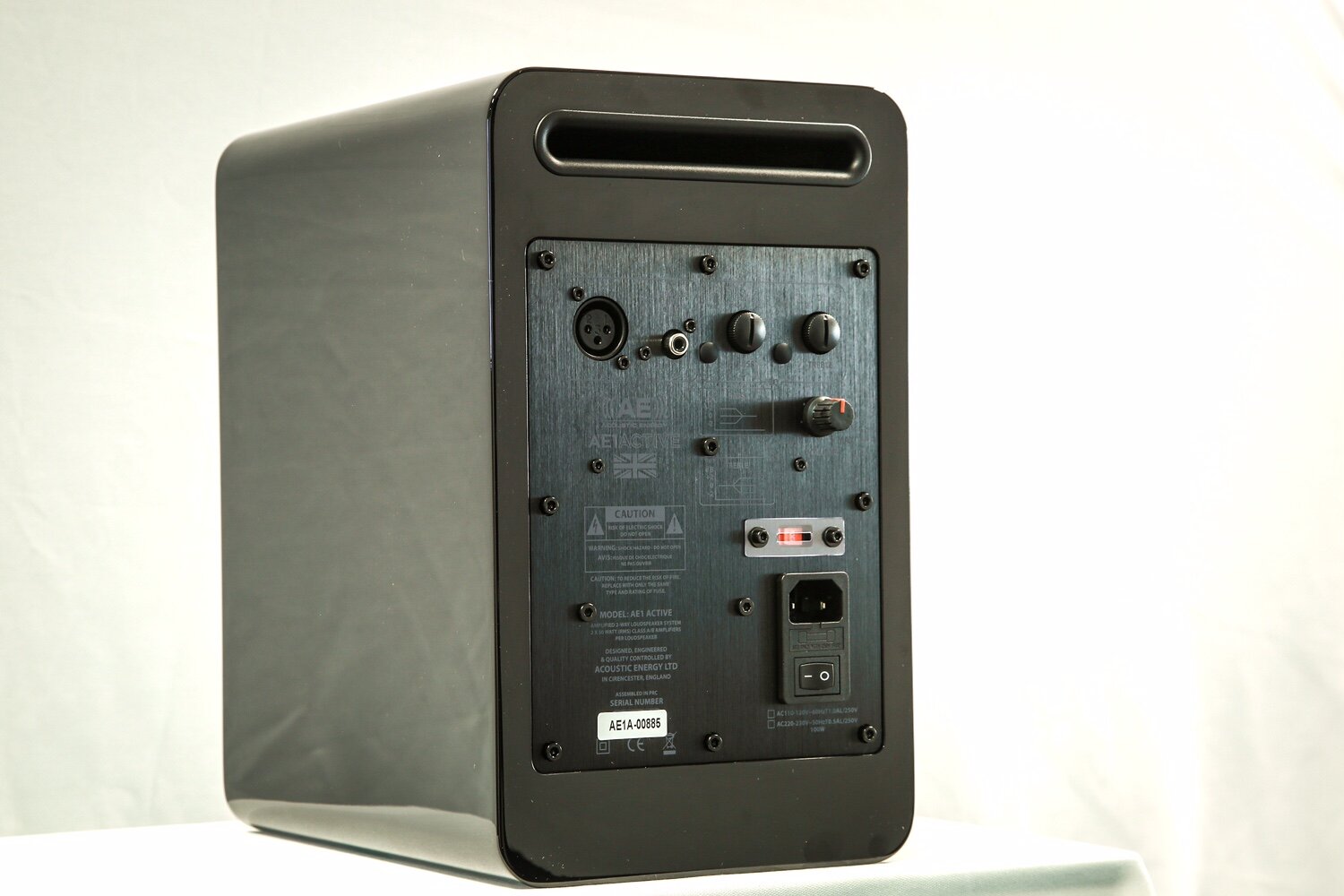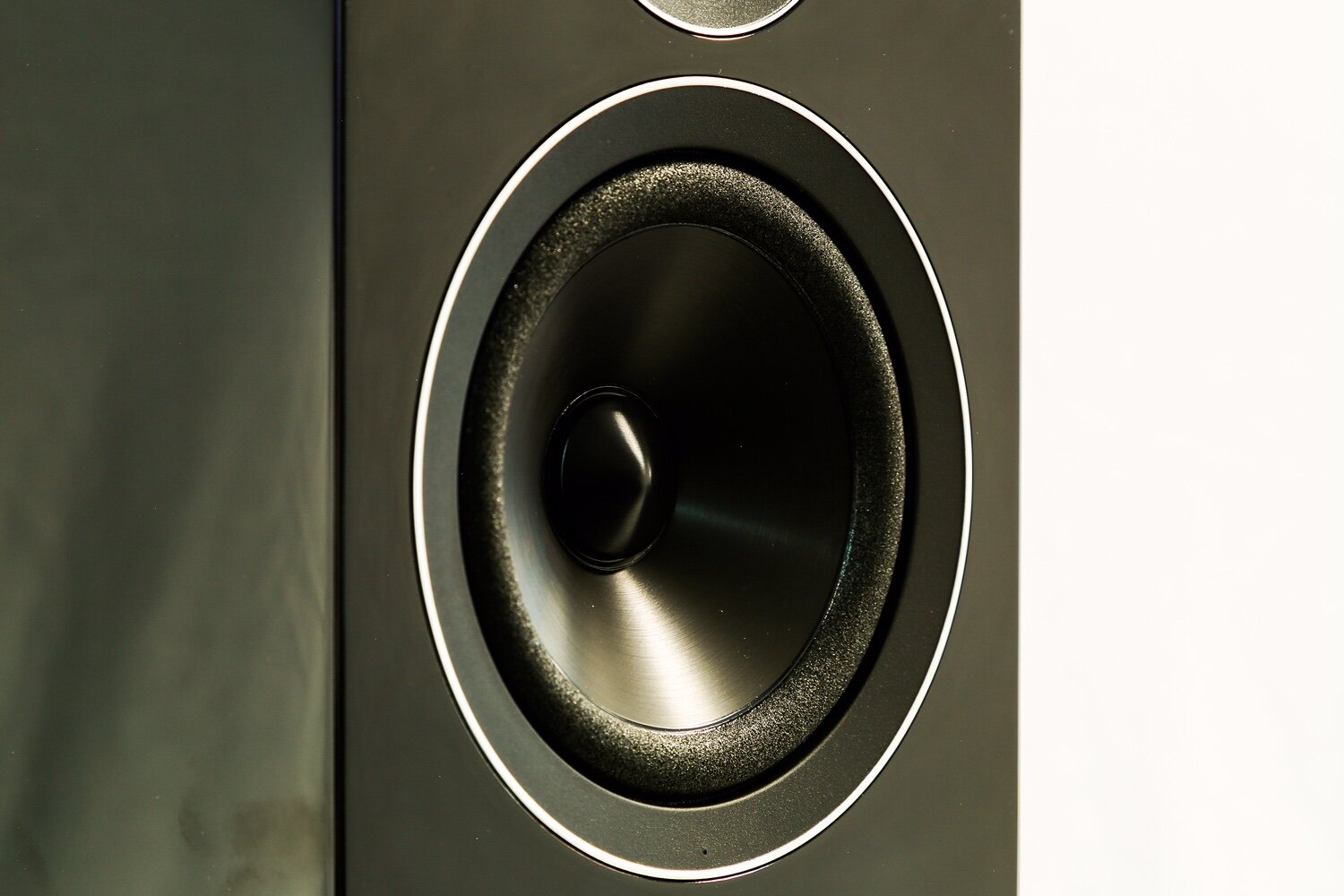ACOUSTIC ENERGY AE1 - LEAD A MORE ACTIVE LIFESTYLE
/In order to maintain a healthy body we really should aim to do 10,000 steps a day, eat your five a day, consume less meat, drink less alcohol and generally be more active.
So with that in mind, I thought it time to visit an active speaker - The Acoustic Energy AE1. The rise in Hi-Fi devices equipped with pre-outputs, particularly streamers, make this a compelling choice…
Acoustic Energy AE1 Actives
One could argue that the ever changing technologies of sources, particularly digital sources, means that if you decide that minimising box count is the way, it's more sensible to lock the amplifier/speaker and free the source, thus future proofing a minimalist system.
Why Active?
When a manufacturer designs a passive speaker, they have to consider a plethora of amplifiers with performance specifications and notably varying outputs.
If we take a source, integrated amp and two way speakers (a tweeter and a mid-woofer - otherwise called drivers). The traditional source signal, for example, from a CD player, streamer or vinyl is fed to the integrated amp which in turn amplifiers the signal. Integral to the passive speaker is the passive crossovers, the most common type of audio crossover located in the speaker. They use a network of passive electrical components (e.g., capacitors, inductors and resistors) to split up an amplified signal coming from the amplifier, so that it can be sent to the two loudspeaker drivers. In our example, that may result in relevant frequencies to the tweeter - that handles high frequencies, around 3.5Khz - 20,000KHz and the Mid-range from 42Hz - 3.8Khz.
With an active speaker, the source signal is directed to the crossover first, then there is an amplifier stage after that then sends those relevant frequencies to the driver.
For a speaker designer, there are clear advantages to this. The ability to tune the amplification and crossover relationship to get the optimum out of the cone design. By doing away with a lot of the passive crossover components, theoretically the source signal is cleaner and the pursuit of perfect phase alignment and less distortion more achievable.
History of the AE1
The AE1 had its first incarnation in 1987, since then has drawn many plaudits and awards. Over the years, the constant refinement has resulted in a very well sorted speaker with a sound and presentation that defies belief from such a small cabinet. In 2014, a wholesale redesign debuted at the Munich High End Show and this went into production in 2016. A few more tweaks and today, here we have 34 years of finely honed development.
Rear features - IEC power input, XLR or RCA inputs, trim control, Bass and Treble +/-4dB fine adjustment
Design & Technologies
Each speaker contains two 50W Class A/B amps, 3.5kHz 4th Order Linkwitz-Riley crossover, with RCA and XLR inputs. Key to the success of the AE1 Active design is its unique pure piston ceramic aluminium cone technology. Now in its fifth generation, this 125mm ceramic hard-anodised spun aluminium cone offers exceptional stiffness at low weight. This negates the cone flex and break-up nodes at frequencies typical of paper and plastic cone designs. The tweeter is an all-new Acoustic Energy designed 27mm metal done unit designed to work in harmony with their Wide Dispersion Technology (WDT) waveguide. Because the design team have control over the crossover and amplification the drivers can be tuned to perfect phase and control over how the dome flexes.
Larger than the passive, the 27mm metal dome unit designed to work in harmony with the Wide Dispersion Technology (WDT) waveguide.
The surrounds are a foam like material, rather than the usual rubber. This allows for a dampening of any reflected frequencies. The cabinet is HDF construction, braced with a 7 lacquer finish. Again less bracing and cabinet dampening is needed because of the active driver control.
Main driver with foam surround - 125mm ceramic hard-anodised spun aluminium cone offers exceptional stiffness at low weight.
System & Sound
Actives have a reputation for being overly analytical, cold sounding & dry. That is why their design is favoured by recording studios of the pro audio world where neutral flat response is crucial for sound production. Whilst this is a presentation that many Hi-Fi Enthusiasts and ourselves really seek out and enjoy, it can be fatiguing where the main aim of a good Hi-Fi system is to intrigue - a sound profile that invites you to explore Music/Film and presents it in a way that emotionally involves us listeners.
We started off with the Bluesound Node, 3m Chord RCA interconnects, Audioquest NRG power leads. Setting up was a breeze. The trim controls and the bass/Treble fine adjustments on the AE1's allow for a wider setting with placement much closer to the walls. Very satisfying results were achieved.
How far could we push the source? So, we connected the Chord Dave to the Bluesound optical out. Over £8k worth of Chord Electronics digital superiority attached to a pair of speakers around the £1k mark is like putting an Aston Martin V12 engine in a Ford Focus, not a setup we would normally advise, but then in a feat of chameleon-like change the AE1 revealed the detailed resolution and Chord signature sound with great gusto.
Saucy sources. Chord Dave, Naim Heaphone amp, Bluesound node
Coming out of fantasy land got us thinking about the typical customer for active speakers. With the advent of the new Naim Uniti Atom Headphone Edition amp - this represents a great entry to the Naim experience for those who enjoy headphones and will happily drive the accomplished Sennheiser HD660s to very high end models, such as the Focal Utopias. Usefully, the Naim HE comes with pre-outs both XLR and RCA. The AE1's really shone with great timing. We had to trim the bass by -2db, but the sound stage is properly 3D, locked and deep with dynamics that would drive a smile across the face of the most critical listener.
Conclusion
Overall, with extremely wide and spacious imaging, deep bass, unmuted clarity with a truly engaging sound the Acoustic Energy have achieved with the AE1. So, while you chew through your salad, know that your music has meat.
You can have a listen to the music we used in all our demonstrations, test systems and fill our listening rooms with over at the constantly evolving Audio-T Bristol Qobuz Playlist - Here.
Max, James & Justin - Audio T Bristol
Be sure to keep up to date with what’s going on in store by following us Facebook and Instagram.
Book an Acoustic Energy AE1 demo at the Audio-T Bristol store.
Acoustic Energy can be found at the following Audio-T stores













